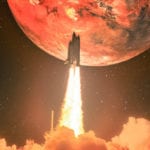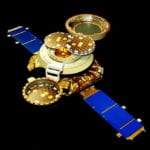 Technology
Technology  Technology
Technology  Humans
Humans 10 Everyday Human Behaviors That Are Actually Survival Instincts
 Animals
Animals 10 Animals That Humiliated and Harmed Historical Leaders
 History
History 10 Most Influential Protests in Modern History
 Creepy
Creepy 10 More Representations of Death from Myth, Legend, and Folktale
 Technology
Technology 10 Scientific Breakthroughs of 2025 That’ll Change Everything
 Our World
Our World 10 Ways Icelandic Culture Makes Other Countries Look Boring
 Misconceptions
Misconceptions 10 Common Misconceptions About the Victorian Era
 Mysteries
Mysteries 10 Strange Unexplained Mysteries of 2025
 Miscellaneous
Miscellaneous 10 of History’s Most Bell-Ringing Finishing Moves
 Technology
Technology Top 10 Everyday Tech Buzzwords That Hide a Darker Past
 Humans
Humans 10 Everyday Human Behaviors That Are Actually Survival Instincts
 Animals
Animals 10 Animals That Humiliated and Harmed Historical Leaders
Who's Behind Listverse?

Jamie Frater
Head Editor
Jamie founded Listverse due to an insatiable desire to share fascinating, obscure, and bizarre facts. He has been a guest speaker on numerous national radio and television stations and is a five time published author.
More About Us History
History 10 Most Influential Protests in Modern History
 Creepy
Creepy 10 More Representations of Death from Myth, Legend, and Folktale
 Technology
Technology 10 Scientific Breakthroughs of 2025 That’ll Change Everything
 Our World
Our World 10 Ways Icelandic Culture Makes Other Countries Look Boring
 Misconceptions
Misconceptions 10 Common Misconceptions About the Victorian Era
 Mysteries
Mysteries 10 Strange Unexplained Mysteries of 2025
 Miscellaneous
Miscellaneous 10 of History’s Most Bell-Ringing Finishing Moves
10 Big Space Problems Solved By Simple Fixes
Sending something into space costs millions of dollars and takes thousands of man hours, in part due to the fact that every eventuality needs to be prepared for—once that thing is in space, there’s very little you can do from Earth if something goes wrong. And yet, time and time again, something does. And time and time again, the lateral thinkers at NASA rise to the occasion.
10 The Curiosity Rover Drives Backward

The Curiosity Rover is a scientific marvel, as well as a mascot for our quest to conquer the stars, or at the very least, our own solar system. Considering that the Rover is around 56 million kilometers (34.8 million mi) away, getting the absolute most use out of it is paramount.
Wheel damage is an unavoidable by-product of driving around on a planet covered in jagged rocks, and Curiosity’s wheels have understandably become chipped and worn as it has explored the surface of Mars. Obviously replacing the wheels is out of the question, so NASA had to think up an on-the-spot solution. What they came up with is ingeniously simple: They told it to drive backward.
The Curiosity Rover has six wheels, so having it drive backward for some of its journey is a great way of spreading potential wear and tear across all of those wheels equally, making them degrade at a more even pace, thus increasing the potential lifespan of the Rover overall.
9 The Hubble Space Telescope Wears Glasses
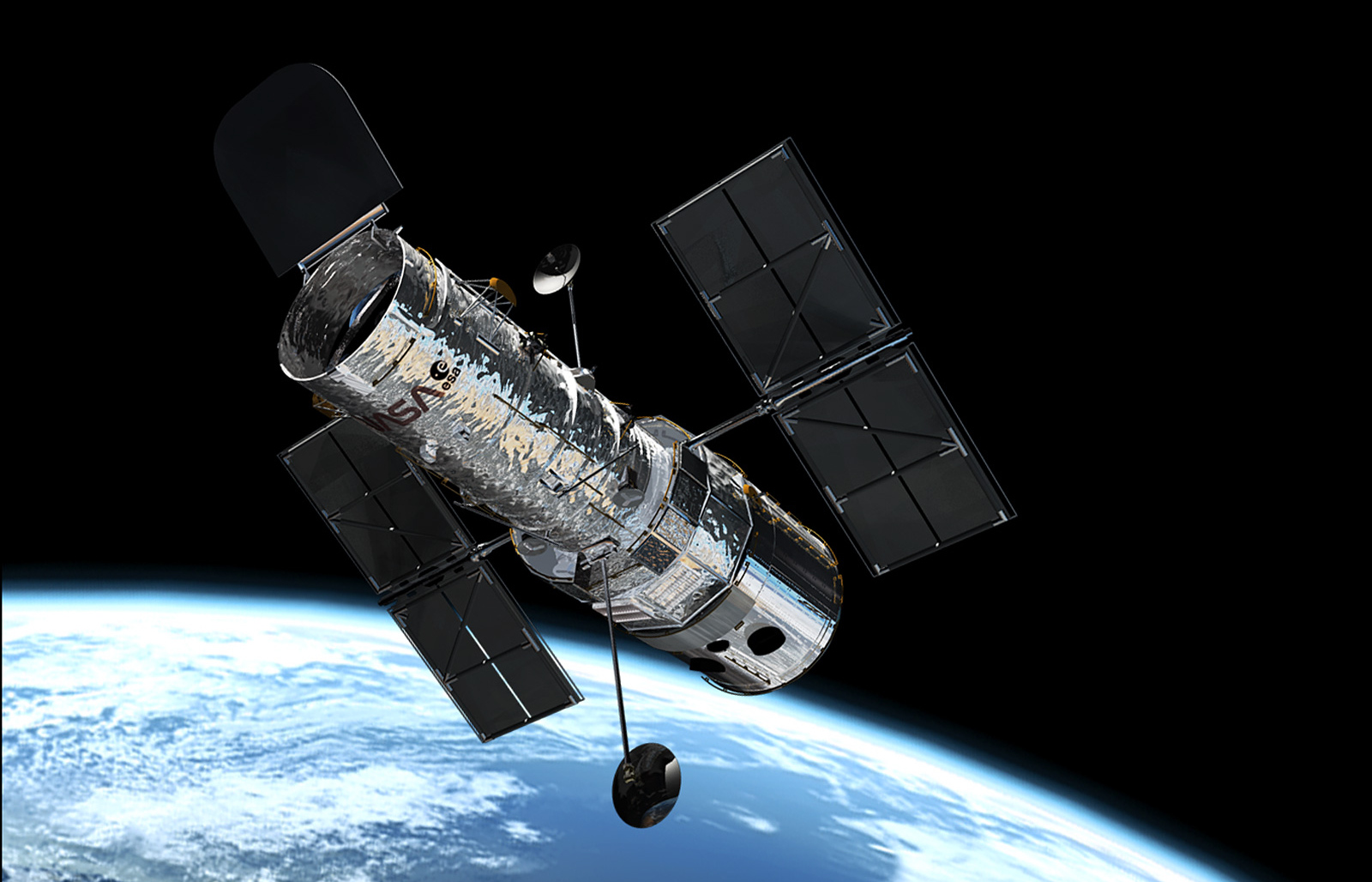
The Hubble Space Telescope is responsible for some of the earliest and best-known images of the outer reaches of our universe, and it has been taking mind-blowing photographs for the better part of 20 years. Though the telescope will one day be replaced as the technology that made it possible improves, the HST is still one of the most famous things currently orbiting our planet.
However, when the HST initially launched into space, the first images it sent back were horribly blurred. They were still better than the images ground-based telescopes were capable of, so people made do. Then the Hubble engineers made a horrifying discovery: A mirror within the telescope was off by “about 1/50th the width of a human hair.” This was the cause of the blurred images they were now stuck looking at.
Rather than build a new mirror, which could have cost an astronomical amount, they solved the problem with an 800-year-old idea: glasses. Using essentially the basic idea behind eyeglasses and contact lenses, engineers designed two instruments to correct the problem, rather than trying to correct the mirror itself. These instruments included a series of relay mirrors, specially created to compensate for the mistake in the original mirror, and a collection of cameras to record the light they reflected and send it back to Earth.
The result was drastically improved images from the telescope, at a fraction of the cost of replacing the entire mirror with a new one. In case you’re curious, the HST was apparently “near sighted.”
8 Huygens Probe Was Saved By Being Late
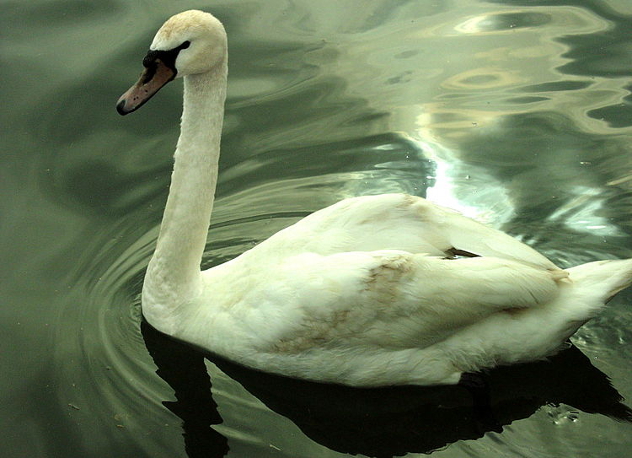
The Cassini–Huygens was a combination spacecraft and probe launched in 1997 with the intention of observing Saturn and its atmosphere. Though the Huygens probe wasn’t the first thing humanity has sent to Saturn, it was the first thing designed to enter its orbit and visit its moons.
However, a few years after the craft launched, engineers noticed a potentially disastrous flaw. You see, the information from the Huygens probe was supposed to be relayed to the Cassini before it was sent to Earth. Unfortunately, it was predicted that if the probe was released as scheduled, the Doppler effect (pictured above—note that the ripples are closer together [higher frequency] in the direction the swan moves) that would occur would make the signal impossible to read.
More specifically: “The Doppler shift did not only change the frequency of the incoming signal, it also squeezed it into a slightly shorter time period. As a result, Cassini’s receiver would have been unable to recognize the timing pulse in its expected location, and thus the incoming data stream would become unreadable.”
This was a death blow for the experiment—or it would have been, if not for the ingenuity of the engineers and scientists working behind the scenes. The plan was simplicity itself: By releasing the probe just a few days later than planned, they would reduce the Doppler effect by allowing the probe and craft to orbit Saturn in a slightly different way.
7 Skylab’s Heat Shield Was An Umbrella
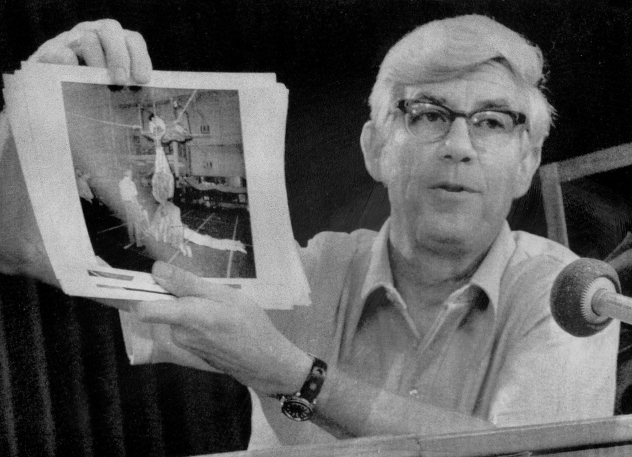
Skylab is remembered by history as one of the world’s first space stations, but it was also the space station that was fixed with fishing poles. When the Skylab launched, the specially designed shielding supposed to protect the crew inside from deadly radiation was damaged and stripped from the craft. Luckily Skylab was unmanned when it launched into space, but the loss of the shielding made it basically useless. No one would ever be able to board, as “Temperatures would be unbearable, onboard food and film stores would spoil and overheated plastic components could exude toxic gases.”
A solution needed to be found, and quickly. Though NASA did come up with a number of ways of fixing the fault, they all involved astronauts having to physically go out into space, at great risk. Enter Jack Kinzler, who, after looking at the designs for Skylab, noticed a small opening, usually reserved for cameras and such, that had been overlooked by the other. This lit a fire in Kinzler’s mind. Why couldn’t astronauts board Skylab, then just use that opening to make the repairs from the inside? In fact, they didn’t need to make repairs at all, they just needed to block out the Sun.
What they needed, in fact, was a parasol. When NASA said they didn’t own such a device, Kinzler designed and built one in six days using fishing poles as a guide. As evidence of how good Kinzler’s design was, the astronauts who later docked with Skylab didn’t even deploy it correctly, yet it still blocked out as much radiation as the original heat shields should have.
6 Simple Name Change Saves Spacesuit
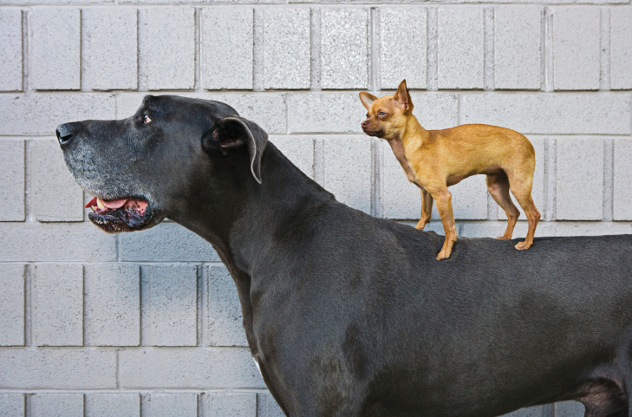
The thing about wearing a spacesuit is that you have to be in there for a very long time and as such, there have to be . . . arrangements made, for bathroom breaks.
When spacesuits were first being invented, one such arrangement (for male astronauts) was the inclusion of a sort of condom, connected to a small bag that would sit snugly around an astronaut’s Johnson, allowing them to relieve themselves without incident.
Unfortunately, as described in this video, astronauts only ever picked the largest size condom, because they could not accept the idea of being a “small” or “medium.” This meant the more discreetly endowed among them risked having it slip off, resulting in them peeing all over the inside of their suit.
To counteract this, the people designing the suits simply changed the names assigned to the three sizes from “small,” “medium,” and “large” to “large,” “gigantic,” and “humongous.” Which apparently worked perfectly, because none of the astronauts complained after that. And neither did the people who have to clean their suits afterward.
5 Duct Tape Fixes Everything
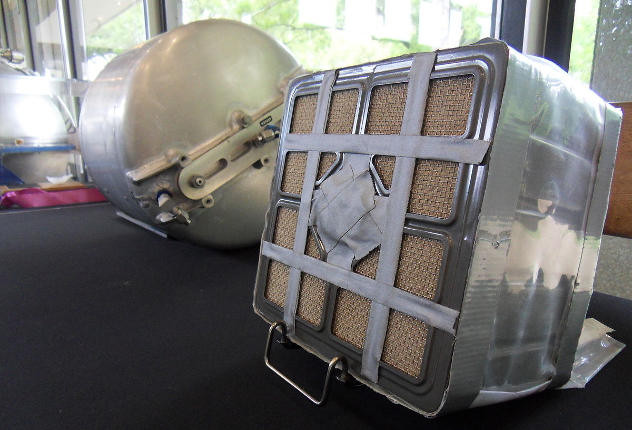
Apollo 13 is remembered as the space mission that went badly, but not so badly that Hollywood couldn’t make a movie about it. For those of you who haven’t seen the movie or read about the mission before, Apollo 13 was originally supposed to land on the moon, but an oxygen tank exploded a few days after take-off, causing the mission to be abandoned. The crew were forced to use the tiny lunar module to survive.
Among the multitude of problems plaguing the crew aboard the ship during the few days it spent in orbit, one of the most potentially lethal was the lack of filters for the machine designed to remove CO2 from the air. According to conservative estimates, the three people aboard the command module had only 24 hours’ worth of clean air left before the filters would run out. Although there were plenty of filters aboard the command module, none of them were actually the right size. The crew had to do the equivalent of fitting a square peg (filter) into a round hole.
Rather than panicking like lesser men would, the crew took the square filters, wrapped them in cardboard and then duct-taped them into the holes, which (as unbelievable as it sounds) totally worked. The end result was no one dying from CO2 poisoning and another well-earned victory for duct tape.
(The photo above is the filter made by the ground crew, which they then instructed Apollo 13 to replicate.)
4 Astronaut Steers With His Wristwatch
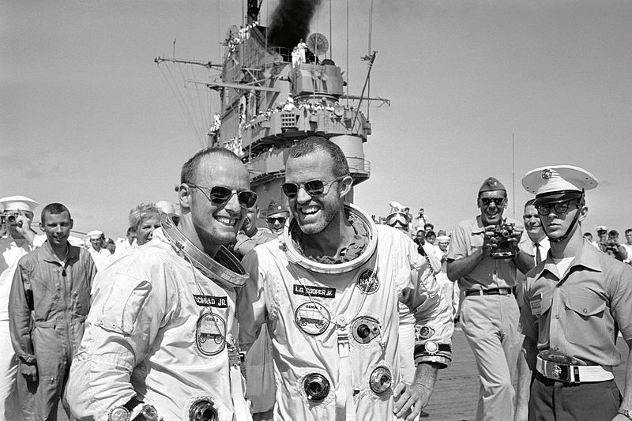
Gordon Cooper (on the right) was an American astronaut tasked with flying the final rocket launched as part of Project Mercury, a series of launches meant to test the waters of human space-flight, in 1962. Cooper’s flight in space was supposed to be a “long-duration mission,” set to last over a day (a record for the Americans at the time). It was both a way of ending Project Mercury with a bang and of keeping up with the Russians.
Horrifyingly, it really did end with a bang. During Cooper’s 19th orbit of the Earth, the electrical systems inside his craft (ironically named “Faith 7” after Cooper’s faith in it), began to fail. By the 20th orbit, Cooper couldn’t read his instruments, and by the 21st he had no way of controlling the craft beyond physically moving the thrusters by hand.
Moving the craft wasn’t much use, though, without anything to steer it by—and none of the navigational instruments were working. Copper stayed calm and calculated his position by looking out of his window at the Sun and stars. He then calculated how long to manually fire the rockets by timing them with his humble wristwatch. In the end, he managed to successfully land in the Pacific Ocean. In other words, using nothing but his own brain and a watch, Cooper was able to match the performance of millions of dollars’ worth of scientific equipment and land a craft with no instruments without hurting himself or anyone else.
3Crew Catches Satellite With Their Hands
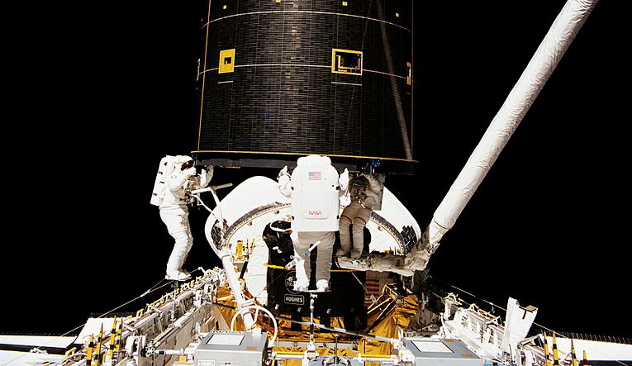
In 1990, NASA launched a communications satellite Intelsat 603 into space, along with four of its brothers. However, due to a technical fault, the Intelsat 603 ended up getting stuck in low-Earth orbit. With no possible way of moving the satellite, the decision was made to simply leave it there.
The satellite stayed where it was for another two years, until the maiden voyage of Endeavour, which was sent on a mission to retrieve, repair, and re-launch the satellite into orbit. Before the satellite could be repaired though, it needed to be captured. This task was given to two of the three astronauts currently aboard the Endeavour, and they were equipped with a specially made “capture bar.”
Pierre Thuot and Richard Hieb spent two days trying to hook onto the satellite with the capture bar, but to no avail. On the third day, both astronauts went on an unplanned space walk, along with the third crewman, Thomas Akers, and captured the satellite by hand.
This was the first time in history that three men had walked in space at the same time, and it was totally unplanned. The fact that those men grabbed a satellite with their actual hands is just the icing on a very cool cake.
2The Back-Up Toilet Is Extremely Low-Tech
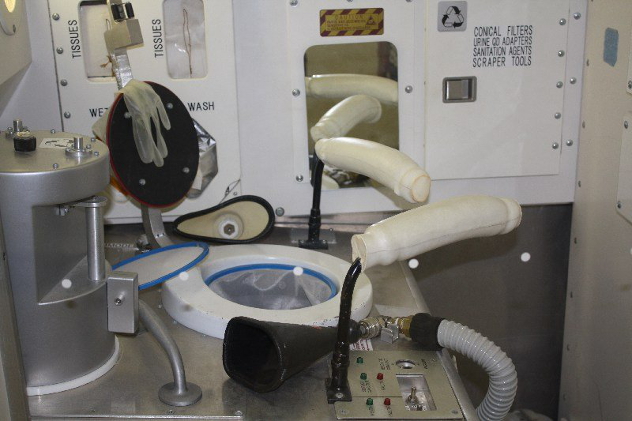
In 2008, the toilet aboard the International Space Station suddenly, and without warning, stopped working. Luckily for the astronauts and cosmonauts aboard, there was still a Soyuz capsule with a working toilet coupled with the station. Unfortunately, since the Soyuz capsule was never designed to contain cosmonauts for any longer than a few days, its toilet didn’t have the capacity to accommodate the needs of everyone aboard the ISS. To add to the Odd Couple–esque situation, a year later, the relationship between cosmonauts and astronauts became even more frayed when a cosmonaut was banned from using the American toilet.
If you’re curious about the usual port of call when a toilet aboard the space station breaks, the answer is incredibly low-tech: They go in a bag. This goes all the way back to the Apollo era of space-flight. For example, on a 1984 mission, astronauts were forced to urinate into bags when their toilet needed to be shut down out of concern that an icicle of frozen urine was going to damage something. Even after they broke the icicle off with a robot arm, the toilet remained turned off, so bags were the only option.
When the toilet aboard the ISS broke again in 2009, NASA noted that “Apollo-era urine collection bags are on hand.” When the toilet broke the year before in 2008, it was reported that the astronauts had to fit a “special receptacle” to the toilet to collect their leavings, which we hope means they used bags, because if not, we’re curious why they didn’t use this receptacle a year later.
Under more extreme circumstances, bags start to look like a luxury. In 1997, the MIR space station was damaged in a collision, resulting in total power loss for two days. To cope with not having a toilet, the astronauts just held it in.
1Buzz Aldrin Uses Pen To Escape Moon

After landing on the Moon, collecting a bunch of Moon rocks and making history, Buzz Aldrin made a terrifying discovery. While looking at the vast array of switches and buttons in the landing module. Buzz noticed that one of the switches they needed to physically push in order to take off and re-connect with the Command Module was broken. Both he and Neil Armstrong were effectively stranded on the surface of the Moon until he fixed it.
After trying (and failing) to sleep on the problem, Buzz noticed that there was a small gap left by the button that he could potentially push a piece of wire into, but he decided against that because he didn’t want to risk electrocuting himself. Eventually, Buzz remembered that he had a standard issue felt tip pen in his pocket, which, in an amazing stroke of luck, just happened to be the exact right size he needed to push into the hole, allowing both men to take off successfully.
After the crew landed, Buzz actually found the broken switch—rather than giving it back to NASA or something like that, he decided to keep it for himself.
If you’re curious about what else Karl gets up to, he has a Twitter and Tumblr account.


